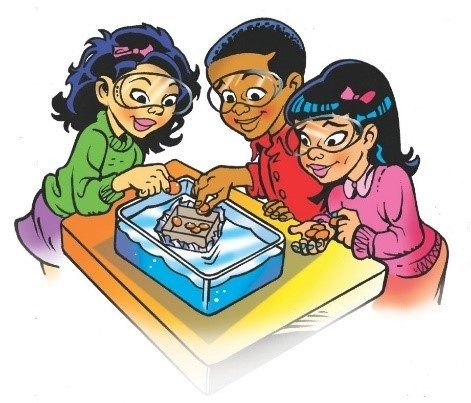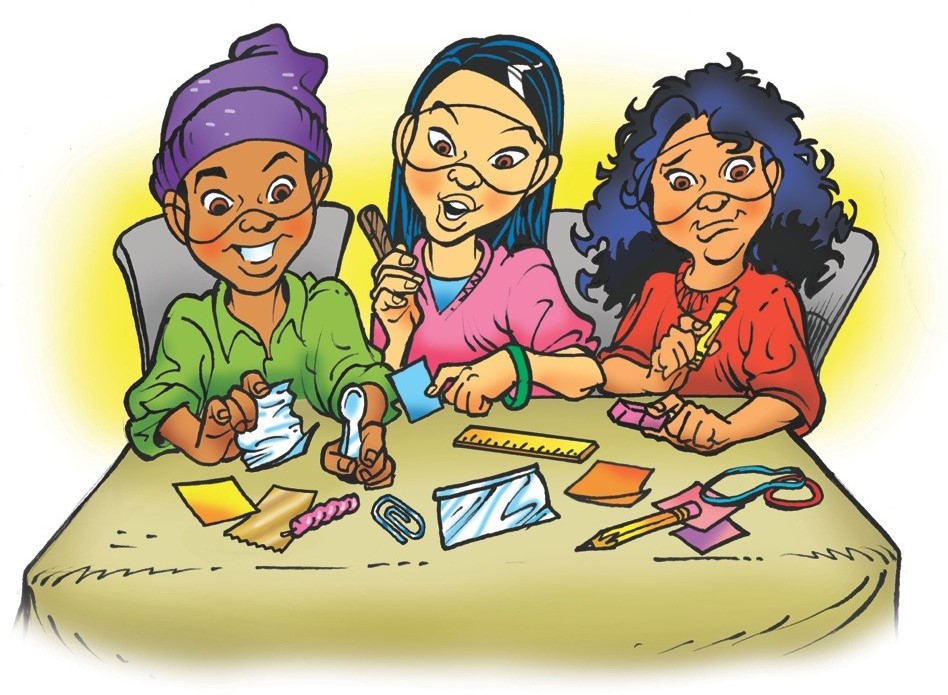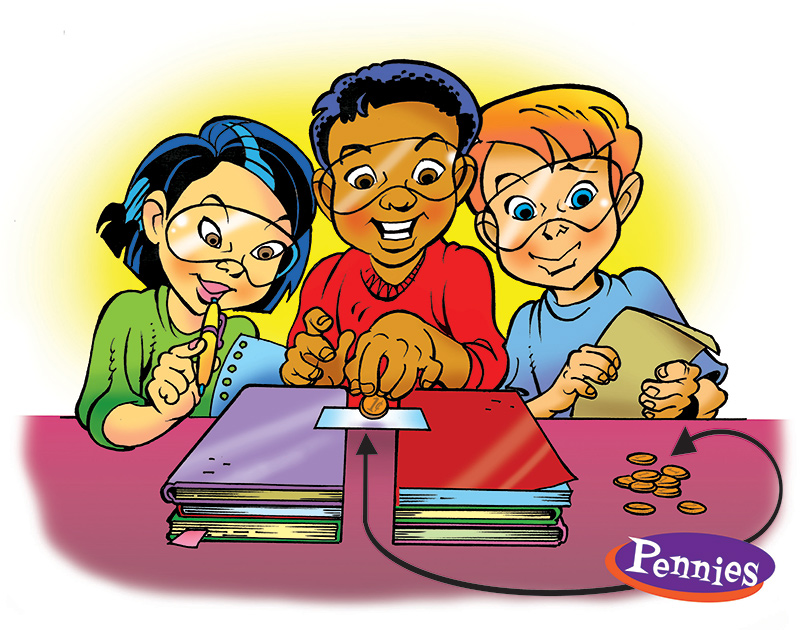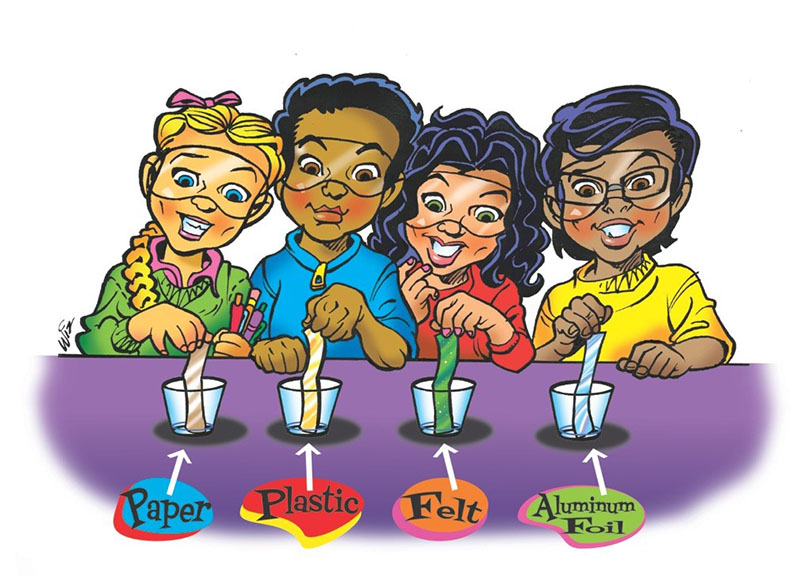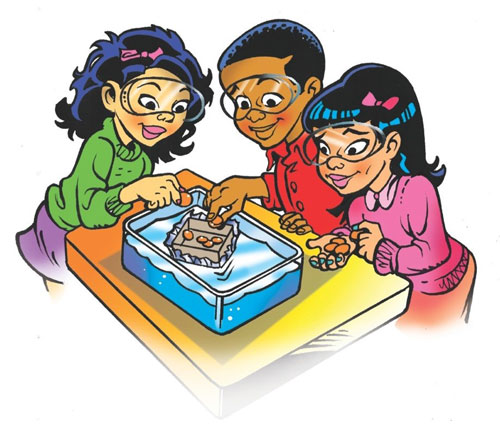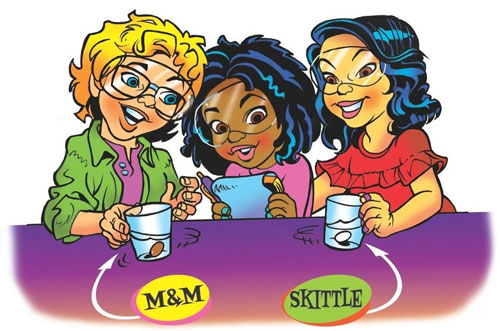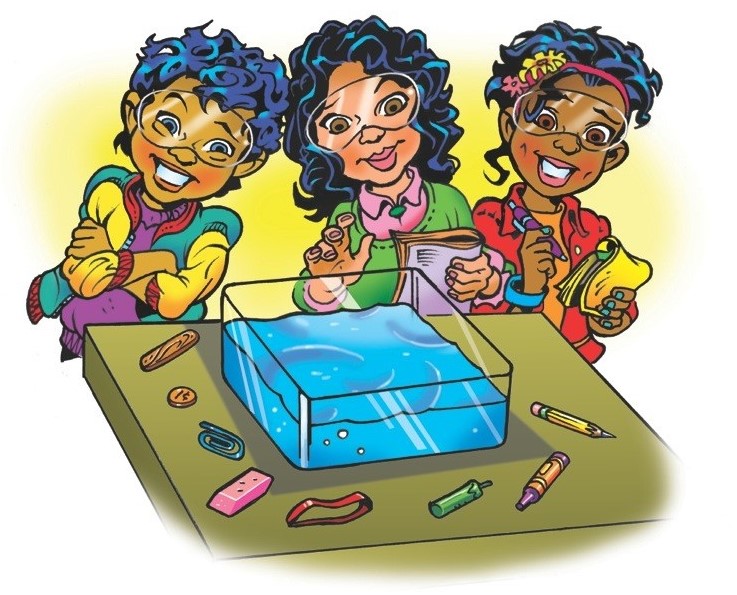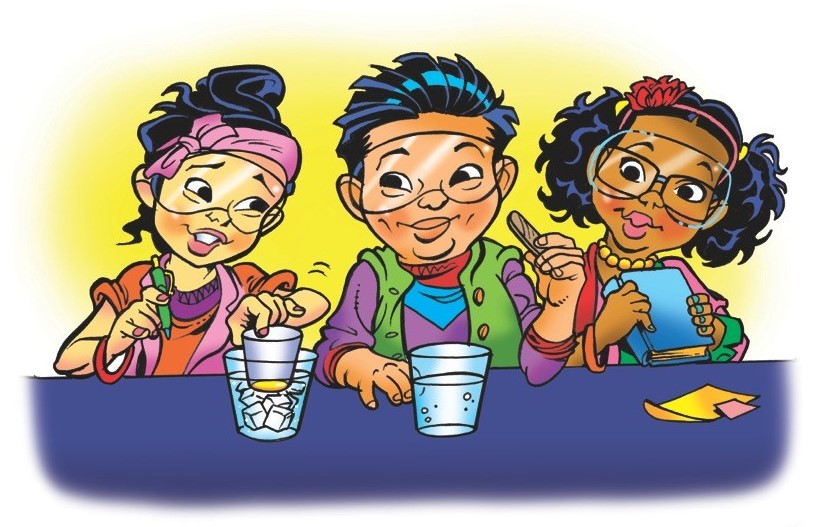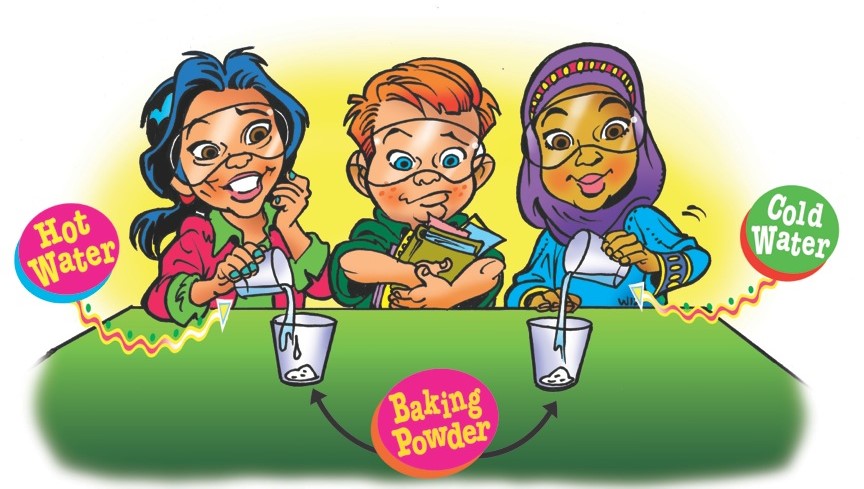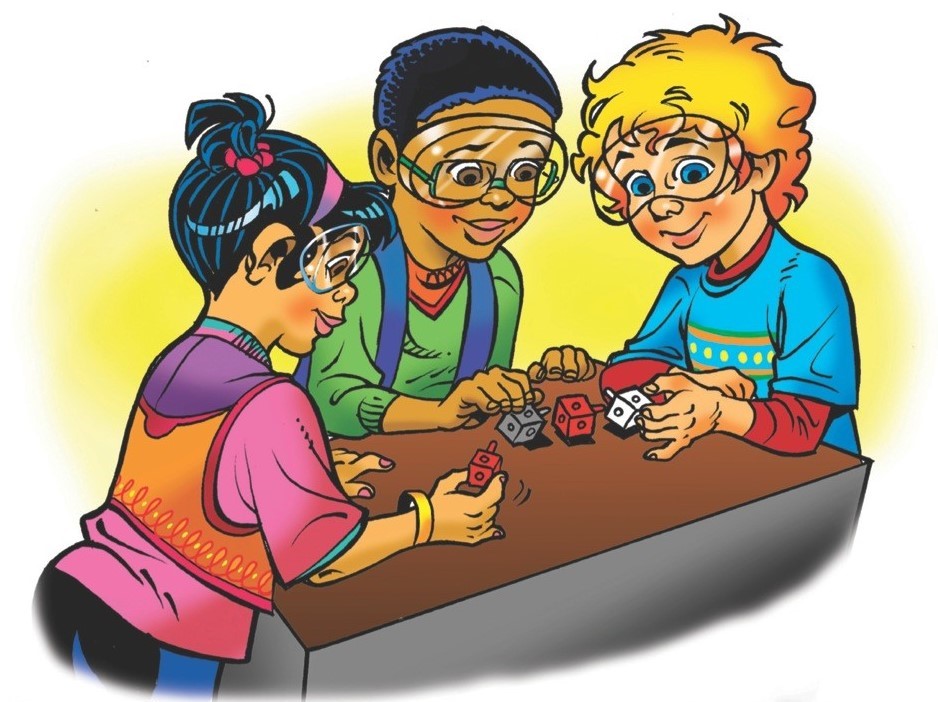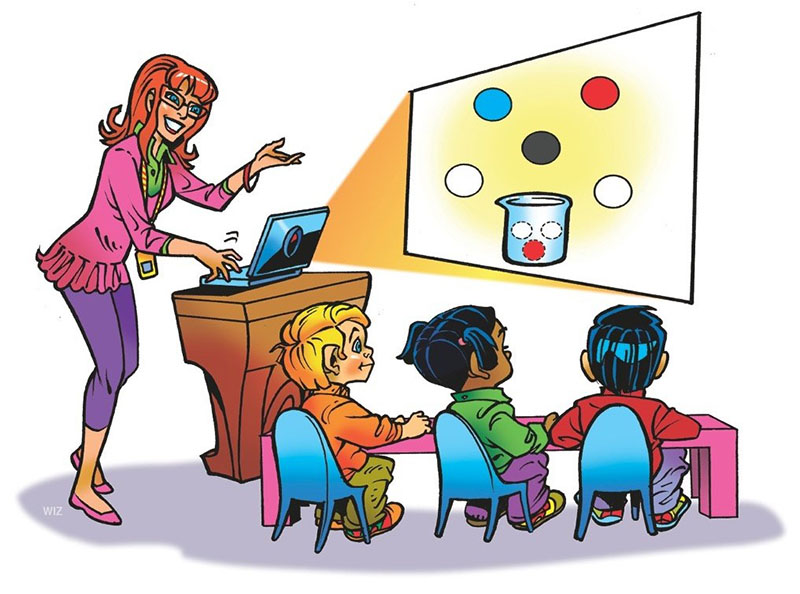Open each chapter to download the lesson plans and student activity sheets. Use the linked multimedia to help explain the science concepts to students.
-
Chapter 1 – Properties of Materials
Students put objects and materials into groups based on their observable properties, test materials for strength and absorbency, and use their results to make a boat that can hold the most pennies before sinking.
-
Chapter 2 – Liquids have Properties
Students use simple tests to compare the properties water, mineral oil, and Karo syrup (corn syrup) to see that different liquids have their own characteristic properties.
-
Chapter 3 – Dissolving is a Property
Students help develop a test to compare the dissolving of an M&M and a Skittle and see that the candy coating on both dissolve in a similar way but the insides dissolve differently.
-
Chapter 4 – Float and Sink
Students test different materials to see if they float or sink and discover that certain materials, such as wax and wood, have the characteristic property of floating, and other materials, such as metal and rubber, have the characteristic property of sinking.
-
Chapter 5 – Heating and Cooling
Students investigate the changes that result from heating and cooling a material like butter that can melt and solidify repeatedly, and the changes that occur when the ingredients in baking powder react which are not reversible.
-
Chapter 6 – Atoms
Students use Snap Cubes to see that the same parts can be rearranged to make many different objects, and that these parts can be used as models of atoms that make many different molecules.
